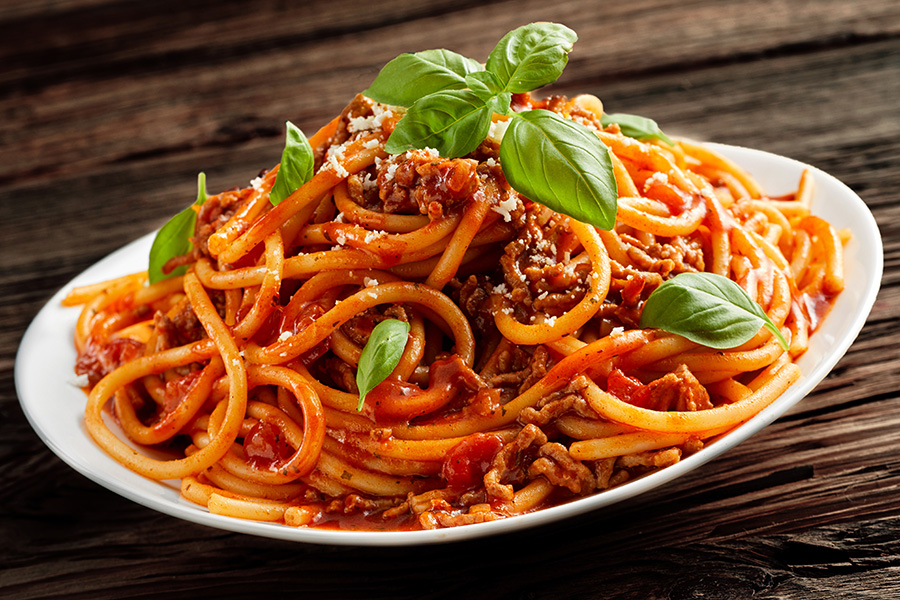What Are MRE? Everything You Need to Know About Military Meals
MRE, or Meals Ready-to-Eat, are ready-to-eat meal packs used mainly by the military. They are designed for convenience and nutrition without the need for cooking. In this article, we’ll cover everything you need to know about MREs, including what are MREs, their components and usage, as well as their shelf life, types, and benefits.
Key Takeaways
MREs are balanced, self-contained meals featuring an entree, side dish, snacks, and an accessory pack for convenience, designed to meet nutritional needs in various conditions.
The Flameless Ration Heater (FRH) enables MREs to be easily heated without an open flame, taking 10 to 15 minutes for preparation, making them ideal for military and emergency use.
MREs come in diverse types, including vegetarian and higher-calorie options, with a long shelf life of up to five years under optimal storage conditions, suitable for both military and civilian emergency preparedness.
Components of an MRE

The design of an MRE pack is a testament to practicality and meticulous planning. Each package is carefully assembled to offer soldiers a nutritionally balanced meal regardless of their location. The centerpiece of every MRE is the main course, ranging from selections like shredded beef to pasta bathed in tomato sauce. Accompanying the entree, side dishes such as rice or mashed potatoes are added for both variety and enhanced nutritional value.
An MRE extends beyond merely providing a main dish. It typically contains crackers or bread paired with spreads such as cheese or peanut butter to enrich the flavor and consistency of the meal. For dessert lovers, there’s often candy or another sweet treat included, while beverage options complete the dining experience—with choices spanning from drink mixes to various other types of drink mixes.
Each MRE comes equipped with an accessory pack—a compact kit essential for survival situations—encompassing items like a spoon, matches, creamer, sugar, salt. Chewing gum—and even toilet paper—is also part of this well-thought-out provision making certain that soldiers have all they require for enjoying their meals under any conditions.
How to Use an MRE

The convenience of consuming an MRE is largely due to its design, which focuses on simplicity and ease of use. Central to this design is the Flameless Ration Heater (FRH), a remarkable innovation that enables soldiers to heat their meal’s main course without requiring any flames, an essential feature when in the field.
To activate the FRH, one must simply insert the MRE pouch alongside it within a specialized plastic bag. The addition of just a small quantity of water sets off a chemical reaction responsible for generating heat sufficient enough to warm up the meal. In roughly 10-15 minutes, dependent on external temperatures, your food will be heated and ready for consumption.
It’s important to exercise caution while handling these hot packs as they can reach high temperatures after heating. If you’re starting with a frozen MRE package, it may necessitate using two FRHs—one dedicated solely to defrosting followed by another round for actually heating—ensuring that regardless of prevailing weather conditions troops are able to enjoy meals served warm.
Shelf Life and Storage Conditions
The extended shelf life of MREs stands out as one of their key attributes. Under official guidelines, these meals can last for up to three years if kept in an 80-degree Fahrenheit environment. This aspect is especially beneficial for scenarios requiring prolonged storage, like military operations or emergency readiness planning.
It’s commonly accepted that MREs remain edible for a span of three years when stored under typical room temperatures. Cooler storage conditions have the potential to expand this period, allowing the food within them to be consumed safely even after five years. The ability of MRES to adapt to various climatic conditions and storage situations enhances their practicality significantly.
Exposure over long periods to elevated heat may drastically diminish the viable consumption window for MREs, making it imperative that they are stowed in optimal environments. To maximize both safety and nutritional value retention, managing a cool and stable setting is essential despite these meals being formulated with resilience against diverse surroundings in mind.
In times where traditional dining facilities might not be accessible due to emergencies or other disruptions, these self-contained rations offer vital sustenance support. Their ease-of-use regarding handling — including effortless stocking options alongside simple packing processes — renders them indispensable elements within any crisis response cache.
Different Types of MREs

MREs cater to a range of dietary requirements and tastes, not adopting a universal approach. There are kosher and halal MREs which feature certified main dishes along with additional items that adhere to specific religious food laws while maintaining the daily nutritional recommendations.
For individuals who abstain from eating meat, vegetarian MRE options are also provided. These alternatives offer varied meal selections filled with essential nutrients ensuring that all individuals have access to convenient, nutritionally balanced meals irrespective of their dietary choices.
For soldiers involved in strenuous activities requiring more energy, there are high-calorie versions of MREs tailored specifically for them. Such packs ensure that these troops receive the necessary nutrition to keep up their vigor during intense missions. The diversity within MRE offerings ensures they can be adjusted for an array of circumstances and individual needs.
Benefits of MREs

MREs offer advantages that go beyond simple convenience. Each MRE is engineered to supply approximately 1,250 calories and a third of the daily recommendations for vitamins and minerals, presenting a well-rounded meal choice particularly critical in demanding situations where nutrition is key.
The significant role of MREs in emergency readiness stems from their extended shelf life and comprehensive nutritional value. The hermetically sealed packaging serves as a barrier against pollutants, rendering them appropriate for deployment during CBRN (Chemical, Biological, Radiological, and Nuclear) crisis scenarios.
Beyond military applications, MREs have garnered popularity with those who engage in outdoor activities such as camping or hiking because they offer an easy-to-carry food solution that eliminates the need for cooking. In times of natural calamities when customary food services are interrupted, MREs prove indispensable by providing affected individuals with safe and nourishing meals. Emergency management strategies frequently suggest incorporating MRES into contingency plans due to their straightforward utility without necessitating any form of cooking preparation.
Common Uses Beyond Military
MREs are crafted to be both compact and lightweight, providing an excellent solution for carrying sustenance during numerous outdoor pursuits. Their ease of transportation is particularly beneficial for enthusiasts engaged in camping, hiking, or any other activity that demands a reliable source of food when far from conventional amenities.
These meals present an economical alternative to traditional meal prep, allowing consumers to save time and money. The combination of affordability and convenience has led MREs to become favored not only among military personnel but also by civilians in diverse contexts.
Originally developed for military use, MREs have since expanded their role into the realm of emergency readiness. They prove invaluable in situations such as natural calamities or unexpected crises where standard food services may be disrupted, ensuring that individuals and families can maintain access to nourishing meals under challenging circumstances.
Where to Buy MREs
Though the manufacturers of military MREs don’t sell them directly to civilians, there are civilian-specific versions that offer a wider selection of meals. These consumer-oriented civilian MREs cater specifically to those interested in outdoor pursuits and emergency readiness.
Civilian counterparts of military-grade MREs can be acquired through online stores like Meal Kit Supply, which presents an array of meal choices tailored for differing requirements. Such distributors ensure their offerings maintain quality and shelf-life consistency akin to standard military rations by sourcing from suppliers who also serve the armed forces.
To enhance cost-effectiveness when buying in large quantities, numerous online outlets provide discounts on pre-orders of these civilian MREs. This pricing strategy facilitates more economical planning for people looking to accumulate a stockpile for crisis situations or recreational expeditions into nature.
MRE vs. Other Rations
Meals Ready-to-Eat, commonly known as MREs, are pre-cooked meals that can be consumed straight from their packaging. This feature gives them a significant edge in convenience over freeze-dried foods which necessitate the addition of boiling water for reconstitution. These ready to eat meals eliminate lengthy prep time, offering immediate nourishment or an option for rapid heating.
People may find varying levels of satisfaction with the flavor and texture of MREs when compared to freshly prepared dishes. In contrast, freeze-dried options tend to preserve more closely their taste and consistency after preparation—an important consideration for some consumers.
The choice between Meals Ready-to-Eat and freeze-dried food often hinges on personal preference regarding ease of use versus culinary quality and preservation of nutritional content. Each alternative offers its own benefits depending on what priorities are emphasized by those consuming these meals—whether they value immediacy or experience in eating.
Summary
To summarize, MREs serve as adaptable and reliable sustenance engineered to fulfill the dietary requirements of both military members and civilians. Their diverse ingredients, user-friendliness, and extended shelf life render them advantageous for emergency readiness, outdoor pursuits, among other scenarios.
Regardless if one is an active-duty service member on duty or an adventurer in nature’s expanse, MREs deliver a practical and wholesome meal choice that stands reliable under any circumstance. It’s wise to include MREs in your crisis supply kit or upcoming excursion gear to guarantee a consistent source of nutritious food.
Frequently Asked Questions
What does an MRE pack typically contain?
Typically, an MRE pack is equipped with a main course, a supplementary side dish, either crackers or bread accompanied by some form of spread, dessert and candy for sweetness, as well as choices for beverages. Included is an accessory kit containing crucial necessities such as a spoon, matches and items pertaining to personal hygiene.
The composition of this diverse collection aims at delivering nutritional value while also ensuring ease of use.
How do you use the Flameless Ration Heater (FRH) in an MRE?
To properly utilize the Flameless Ration Heater (FRH), place the MRE pouch adjacent to the ration heater inside a plastic bag. Then initiate the heating process by adding water and wait for roughly 10 to 15 minutes until your meal is sufficiently heated.
Adhering to these instructions will guarantee that your rations are heated effectively.
How long is the shelf life of an MRE?
MREs typically have a shelf life of three years at 80 degrees Fahrenheit, but they can last up to five years when stored in cooler temperatures.
Proper storage conditions can significantly extend their usability.
Are there different types of MREs available?
Yes, there are different types of MREs available, such as kosher, halal, vegetarian, and higher-calorie options, designed to accommodate various dietary preferences and needs.
Where can civilians buy MREs?
Civilians can buy MREs from online retailers like Meal Kit Supply, which specializes in meals for outdoor activities and emergency preparedness.
This enables easy access to durable and convenient meal options.
